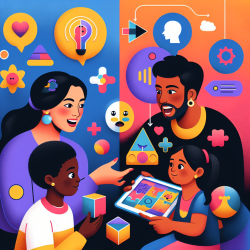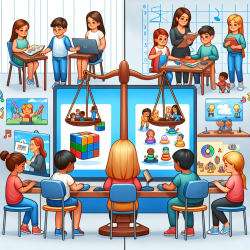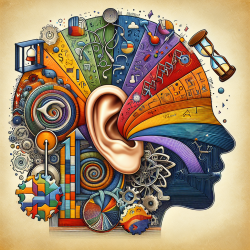As a passionate advocate for data-driven decisions in speech-language pathology, I am always on the lookout for innovative and effective interventions to support children with autism. One promising area of research is the use of analog and digital games for autism interventions. A recent review by Atherton and Cross (2021) in Frontiers in Psychology provides a comprehensive overview of how games can be used to improve social, cognitive, and emotional skills in individuals with Autism Spectrum Condition (ASC).
Here, I will summarize key findings from the review and discuss how practitioners can implement these insights to enhance their therapeutic approaches.
Benefits of Game-Based Interventions
Games, whether analog (board games, role-playing) or digital (computer, video games), offer unique advantages in autism interventions:
- Motivation and Engagement: Games are inherently enjoyable and motivating, which can help sustain participation and interest in therapeutic activities.
- Naturalistic Learning: Games provide a context for practicing social and cognitive skills in a more naturalistic and emergent setting compared to traditional interventions.
- Customization: Both analog and digital games can be tailored to fit individual interests and needs, making them highly adaptable tools for intervention.
Analog Games in Autism Interventions
Analog games, such as board games and role-playing games, have been shown to improve social skills and emotional intelligence in children with autism. For example:
- Power Cards: Daubert et al. (2015) used Power Cards featuring children's favorite characters to model appropriate behaviors during game play. This approach significantly improved turn-taking and social commenting.
- Role-Playing Games: Fein (2015) found that live-action role-playing games (LARPing) helped autistic adolescents develop social narratives and build a sense of community and acceptance.
- Board Games: Jung and Sainato (2015) personalized board games based on children's special interests, which increased social engagement and reduced inappropriate behaviors.
Digital Games in Autism Interventions
Digital games offer additional benefits, such as built-in progress tracking and enhanced visual engagement. Some notable examples include:
- TeachTown: Whalen et al. (2010) demonstrated that this computer-assisted intervention improved language and cognitive skills in young children with autism.
- Collaborative Puzzle Game: Battocchi et al. (2009) used a digital tabletop game to foster collaboration and coordination among children with autism.
- KASPAR the Robot: Wainer et al. (2014) showed that playing imitation games with this humanoid robot improved social interactions among autistic children.
Practical Implementation Tips
To effectively integrate game-based interventions into your practice, consider the following tips:
- Start Small: Begin with simple, off-the-shelf games that can be easily adapted to meet your clients' needs.
- Customize: Tailor games to incorporate children's special interests, which can increase motivation and engagement.
- Monitor Progress: Use built-in tracking features in digital games or manual recording methods to monitor and evaluate progress over time.
- Encourage Peer Interaction: Facilitate group play sessions to promote social interactions and build peer relationships.
Conclusion
Incorporating games into autism interventions offers a promising approach to enhancing social, cognitive, and emotional skills in children with autism. By leveraging both analog and digital games, practitioners can create engaging, effective, and customizable therapeutic experiences.
To read the original research paper, please follow this link: The Use of Analog and Digital Games for Autism Interventions.










